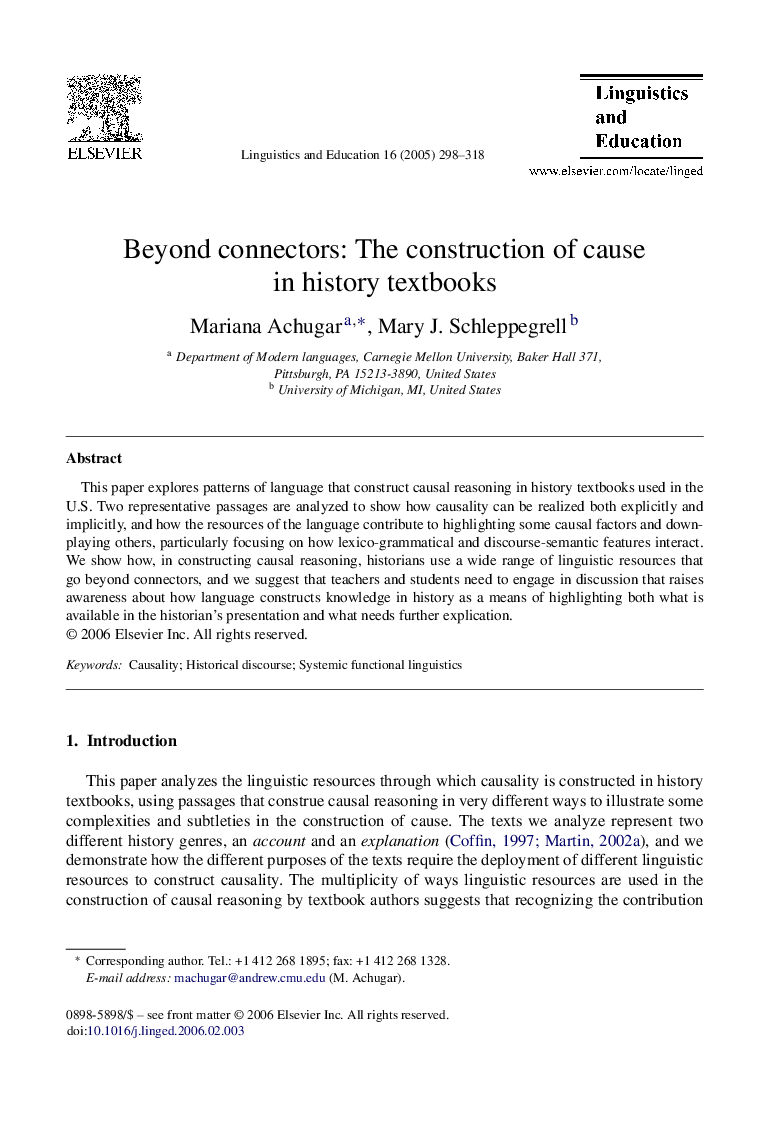| Article ID | Journal | Published Year | Pages | File Type |
|---|---|---|---|---|
| 10315982 | Linguistics and Education | 2005 | 21 Pages |
Abstract
This paper explores patterns of language that construct causal reasoning in history textbooks used in the U.S. Two representative passages are analyzed to show how causality can be realized both explicitly and implicitly, and how the resources of the language contribute to highlighting some causal factors and downplaying others, particularly focusing on how lexico-grammatical and discourse-semantic features interact. We show how, in constructing causal reasoning, historians use a wide range of linguistic resources that go beyond connectors, and we suggest that teachers and students need to engage in discussion that raises awareness about how language constructs knowledge in history as a means of highlighting both what is available in the historian's presentation and what needs further explication.
Related Topics
Social Sciences and Humanities
Arts and Humanities
Language and Linguistics
Authors
Mariana Achugar, Mary J. Schleppegrell,
